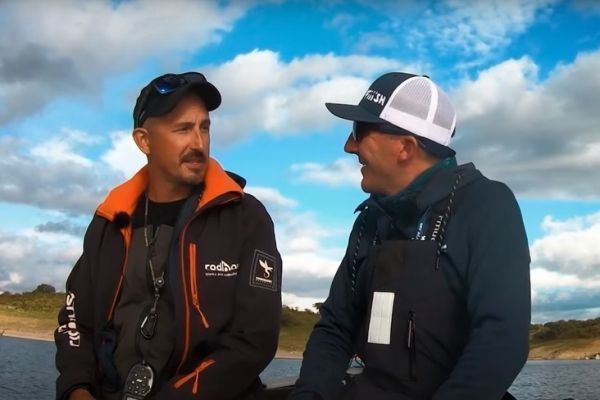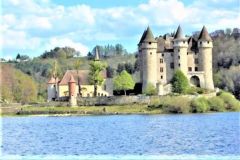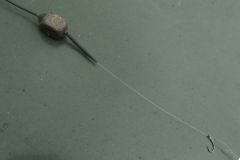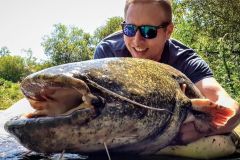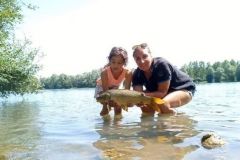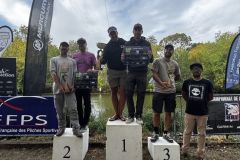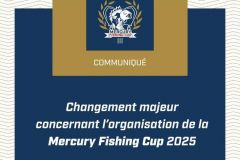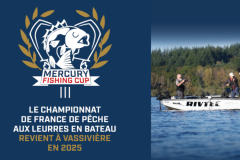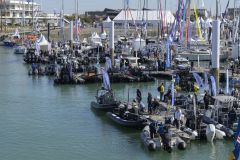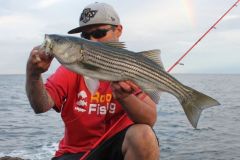Once again, a first fish on the first cast or is it the video editing that gives this effect?
Tony : So, from memory, it's mainly the video editing, because in reality we keep fishing between the first and second episodes. So the images are arranged in such a way as to encourage activity and suspense!
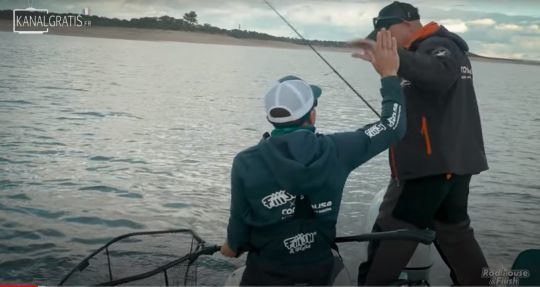
The weather seems to have been more clement in the afternoon, when you persisted in the sheltered area?
Tony : No, the weather's no better... You can't see it in the picture, but we've suffered a lot. But in the afternoon we were obliged to go to the sheltered area, both physically and materially. Indeed, fishing in full wind (with 7 days of prefishing beforehand) for a whole day exhausts not only the body, but also the equipment. And we couldn't fish with an electric motor for a whole day in a strong wind, so we had to adapt our strategy. The boat is very practical, but quite heavy, and fishing in full wind with a virtual anchor also drains the batteries... What's more, it's a very hilly and exposed stretch of water, so when the wind kicks in, we're completely caught!

You're on Valdecanas if I'm not mistaken, is the pike-perch population different from that on Orellana? We don't get the impression that you catch any other fish, though?
Tony : Valdecanas is a reservoir on the Tagus River, with a superb zander population and almost exclusively pike-perch. There are a few bass and a few catfish, but most of the fishing is for pike-perch. Beautiful, combative fish, it's really a great spot!
It's true that we don't catch many other fish, it happens but it's anecdotal! In the first episode, we catch a bass and a catfish in particular. There are still a few catfish to be had if you concentrate on them, as the Tagus River is home to a fine population!
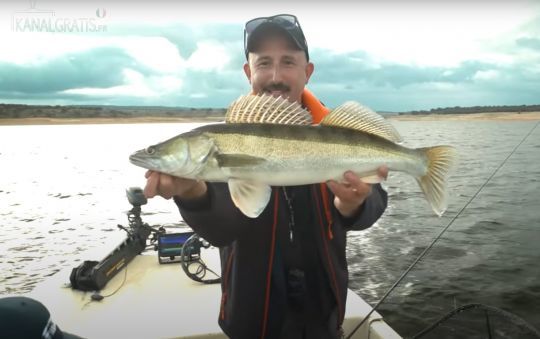
Nays uses small lures during the day and big ones at night!
Tony : They've been perfectly aware for the past 2 seasons that they only hit the big ones at night, so during the day they focus on the all comers and try to keep the numbers up as long as the big ones aren't out there. At night, their focus is clearly on big fish and top five. They try to select as many as possible with big 20-25 cm lures. Although, as Dustin rightly says, big lures also take 45 cm fish...
In my opinion, this is a purely strategic choice, not an adaptation to conditions.
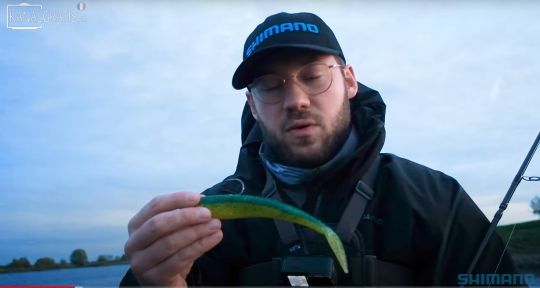
We see LMAB and also Shimano saying that it's very important to fish light. Is this your priority approach too?
Tony : So I also love to fish lightly in linear, but clearly you have to know how to adapt to the mood of the fish and also to the conditions. In this case, for example, if you don't adapt your sinker to the wind, you completely miss out on the fishing. For example, on this first day, we were forced to fish with Black Minnow in 12 and 18 grams.
What I like about light lures is the natural presentation and the quality of the bite. It's really exceptional in these conditions, because the suction is total!
But sometimes pike-perch like heavy lures that hit the bottom. But that's always my second choice! As a priority, I always start with a light lure and a nice, fluid presentation and a slow, gliding descent.
That's how I learned, but heavy presentations work too.
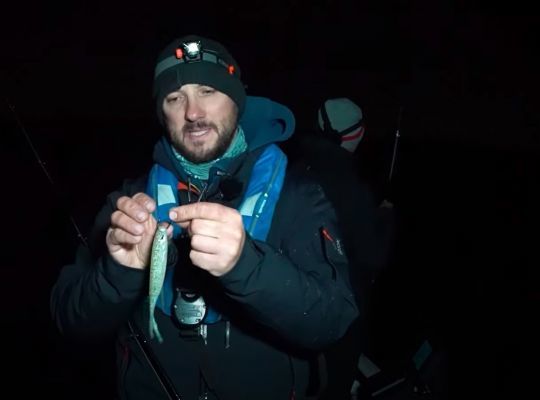
Nays uses mainly dark lures, while LMAB starts out with white lures and switches during the night. Do you have a strong opinion on the question of colors?
Tony : Clearly not, because as we all know, you have to adapt to the color of the water, the light conditions and the mood of the pike-perch.
I don't have an opinion on night fishing, as I don't practice it, but if they say so, we can trust them on the subject, as they're big shots! But these are comments Freddy made last year on the importance of the moon in the choice of lure color.
If you put yourself in the shoes of a carnivore looking at the sky and seeing the moon, a dark lure passing in front of this star is probably more visible.
During the day, as I said, I think it's the water color and the sky color that are the determining factors. As for me, I fish a lot in winter and in very tinted waters and I'll always run several colors through to see which one stands out on the day.
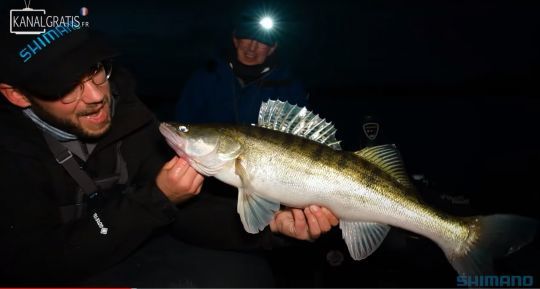
Freddy Harbort uses rattles. Did you also use this subterfuge?
Tony : I never do! I never do! But they do use rattles, because they're in an active phase. Putting on a rattle is a smart choice in these conditions, as it allows you to select the most active and aggressive pike-perch first.
With soft lures, I vary the vibrations, but I also fish them with lipless lures, and there they are. It's still in a particular context, at dusk when there's a peak of activity.
Freddy Harbort again, fishing with a drop shot. Is this a technique you also use for pike-perch?
It happens to me, because it really is a formidable technique when you need to present a lure very precisely or when fish are fussy. The animation is quite slow, as the aim is to place the lure in a precise spot and wait a little longer for the pike-perch to snap.
I also use it to fish along a break when I want to present my lure at different heights. For percids, it's really an essential technique!
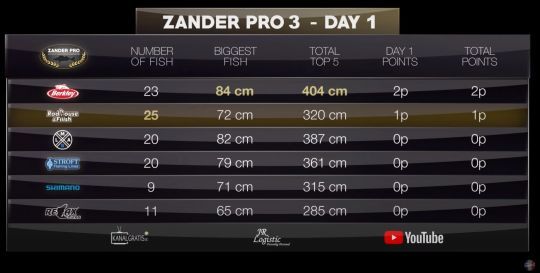
Berkley finishes with 2 points, does that change your strategy or your state of mind?
Tony : No, because we already knew that at the time of the postponement, and it doesn't change our strategy at all. Our objective is to take one point per day and maybe a bonus point with the top 5 on board, so the contract is fulfilled on this first day. But it's true that we'd have been more reassured if the big fish point and the top 5 point had been split between the other teams.
Our plan is working so far, just barely, because we finished 25 pike-perch to 23, but it's working, so I still believe in it! We'll see how it goes from the shore, as all the Zander Pros were won on the shore run... So the next two episodes are going to be decisive.
I don't know what the other teams did, but I know what we did!
Nays can make a big splash and LMAB made a big impression on the first day, so we'll wait and see. We're doing our fishing and keeping our eye on the numbers.
We knew they'd catch bigger fish, but the big fish is 84 cm and it's not a space fish. By prefishing on Valdecanas we got up to 87 cm, so anything's possible in every episode.

 /
/ 